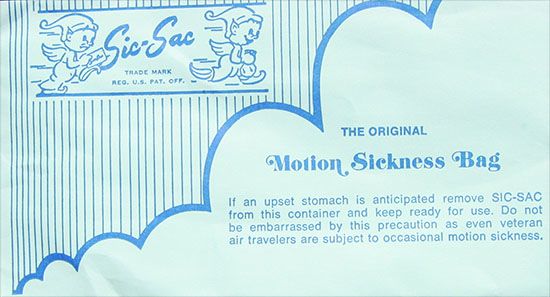Owning an airplane provides endless possibilities even as it presents new challenges. While anyone who’s owned and flown the same airplane for a few years likely will become comfortable with it, that’s not always the case with passengers, even if they’re experienced pilots.
The first time I encountered a nervous passenger—”nervous” in this instance involved a barf bag—I had my hands full. It was a busy non-towered airport and, while I was spotting and dodging the local traffic, I realized my Bonanza’s landing gear hadn’t fully extended. Recycling it didn’t help. About this time, my pilot-rated passenger grabbed a fresh barf bag and proceeded to at least partially fill it. He was out of commission at a time when I could use an extra pair of hands.
That’s because the Bonanza’s emergency gear-extension system requires 50 turns on a crank mounted behind the front seats to lower the wheels while flying the airplane. Of course, it helps if the airplane is slowed, but as drag increases, it also helps to increase power. It’s almost an Olympics gymnastics category.
After a few minutes during which he and I both did some soul-searching about our life choices, I got the gear down and locked, he secured the barf bag and we rejoined the busy pattern for an unventful landing. The gear problem turned out to be a dirty microswitch. Not sure what the pilot-passenger’s problem was.
Fast forward a few years. The SO and I had flown a few places for lunch or to an overnight destination and she wanted to introduce her young daughter to personal airplanes. I was game, so we picked a good VFR day with smooth weather, strapped in the daughter to the right front seat and put Mom in the back. Off we went. But not very far.
We had just cleared home plate’s Class Delta when the daughter told us she wasn’t feeling well. She said it with some anxiety in her voice, which told me she was either scared or disoriented. She couldn’t see over the instrument panel in front of her, but had a great view of the right wing and beyond. But she was increasingly uncomfortable, and made sure the adults knew it.
There really was only one thing to do: turn around and land. Which is what I did. The tower controller initially expressed concern we wanted to return but relaxed when I told him we simply had a nervous passenger. Mom, being the Type A personality she was, tried to convince her daughter to suck it up, but the little one wasn’t having any of that.
I learned two things. First, no matter what’s happening around you, fly the airplane, even if you have to perform a strenuous procedure by yourself. Second, an anxious passenger who doesn’t want to be in the airplane is a passenger I want on the ground as soon as possible. In the meantime, I have more barf bags in the glove box.
Have you encountered a situation or hazardous condition that yielded lessons on how to better manage the risks involved in flying? Do you have an experience to share with Aviation Safety’s readers about an occasion that taught you something significant about ways to conduct safer flight operations? If so, we want to hear about it.
We encourage you to submit a brief (500 words) write-up of your Learning Experience to Aviation Safety for possible publication. Each month, Aviation Safety publishes a collection of similar experiences sent to us by readers. Sharing with others the benefit of your experience and the lessons you learned can be an invaluable aid to other pilots.
You can send your account directly to the editor by e-mailing it to [email protected]. Put “Learning Experience Submission” in the subject line; add your name and daytime telephone number at the bottom of the e-mail.
Your report will be considered for publication in the Aviation Safety’s readers’ forum, “Learning Experiences,” and may be edited for style and length. Anonymity is guaranteed if you want it. No one but Aviation Safety’s editor is permitted access to the reports. Your name and telephone number are requested only so that the editor can contact you, if necessary.
While we can’t guarantee your submission will get published, we can guarantee that we’ll closely review and consider using it.
All Learning Experience submissions become the property of Aviation Safety and may be republished.




